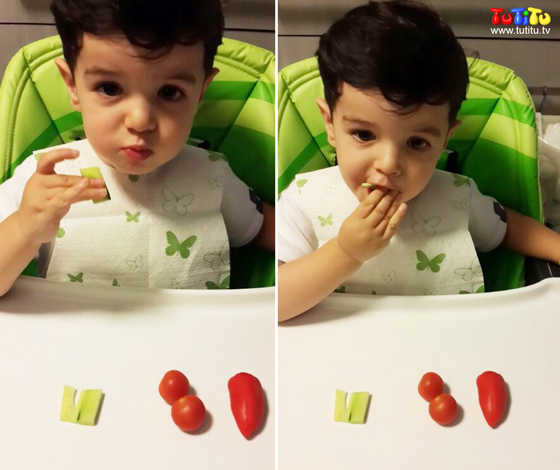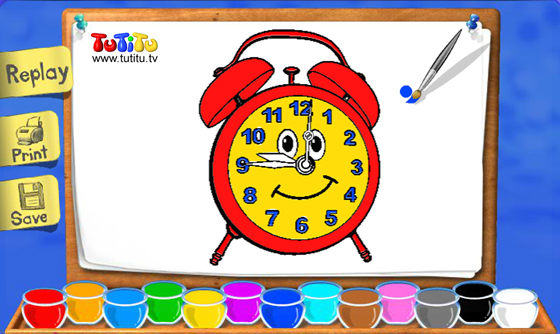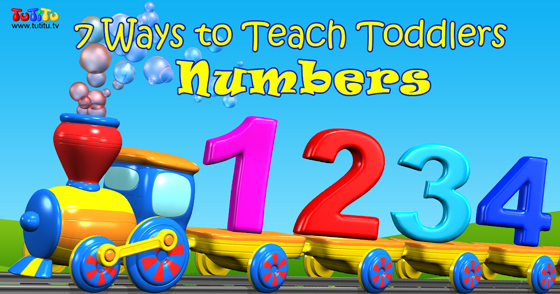Toddlers love counting. It truly is amazing to see how much pleasure they derive from the repetitive task of sounding out this oh-so-familiar sequence: one, two, three, four, five…
In addition to the learning advantages of acquiring basic math skills by first mastering number recognition, counting is also good for preschool children’s sense of self-esteem. The ability to count objects and think abstractly empowers children, and gives them a comforting sense of order and control.
You don’t need to become your child’s “teacher” to help them learn number recognition. There are many fun, easy ways to incorporate number learning into your toddler’s everyday activities. Ready to have some numbers fun? One, two, three – Let’s start learning!
#1: Three Tasty Treats
If learning while having fun is effective, learning while eating must be twice as effective. Food is a basic pleasure and necessity, and kids are naturally interested when snacks are involved. Count with your child as you’re placing food items on their plate, then count again while s/he is eating. With every item eaten, there would be less items to count, which means the lower, more basic numbers, will be counted many times. Such repetition is great for helping kids practice and remember the new knowledge they’re gaining.

#2: Numbers Scavenger Hunt
We adults may not notice them or give them a second thought, but numbers are everywhere: on the front of our houses, in bus stations, on buttons of various home appliances, on objects like telephones and clocks, and on commercial logos.
Once kids start learning to recognize numbers, they become very perceptive and seem to notice numbers everywhere. Turning the natural instinct of “Mom look! Here’s a six!” into a scavenger hunt is a fun way to keep toddlers busy on the go AND reinforce number learning.
A numbers scavenger hunt is particularly easy to arrange: simply ask your child to locate the numbers 1-10 in the objects they see around them. You can even give them a card with the numbers written on it, so they can cross off numbers as they find them. This game will also keep them busy when you’re on the go (say, running errands), when you can challenge the kids to locate each number in order, and see how many times they can reach ten.
#3: Numbers Songs!
Just like with teaching kids the ABC, when you’re teaching a toddler numbers – music is your best friend. Although number songs for kids may not be as popular online as alphabet songs, there is still no shortage of great number songs you can watch with your child for free.
Try starting small, with the numbers one to ten, or even just one to five, and choose a song with a simple, repetitive structure. Don’t forget to sing-along! Educational videos become even more effective when they serve as the basis for positive child-caregiver interaction.
#4: Ten Little Fingers
Our own bodies are probably the most accessible tool we humans have. Why not use this ever-present wonder to do some number learning? This method works well both with very young children, who will enjoy the smaller quantities (e.g. one nose, two hands), and with more advanced learners who can count up to twenty fingers and toes.
#5: Jump Around!
High energy kids can enjoy number learning too! Draw the 1-10 numbers on sheets of paper and place them in a scattered manner on the living room floor, or the backyard. Randomly call out numbers and ask the kid to run to the number you called. The more energy you want exerted – the further away you should place the numbers! For children who already know their numbers well, you can make this more difficult by replacing some or all of the numbers with the same number of play blocks (or any other available items).
#6: Meeting Mr. Clock
Any new concept is best learned in context. Time is a natural context for learning numbers, since one of the ways in which children are most often exposed to numbers is when caregivers discuss minutes, hours and days in the course of everyday life (e.g. “five more minutes of watching TuTiTu and then bedtime!”).

Use children’s fascination with time-telling to teach numbers, by drawing a circle and letting them fill in the numbers for a clock, giving them coloring pages, or handing over a real clock they can look at and touch while you go over the 1-12 numbers. Your calendar (if you still have a hard copy) is also a great tool for counting the days of the week and month.
#7: Number Books!
Reading about numbers and practicing counting can be interactive, visually engaging, and super fun. Check out our “Kids ♥ numbers and letters” Pinterest board for amazing resources and recommendations on the best number books for kids. You’ll also find recommended apps and games, activity ideas, crafts, art projects, and more.
What are YOUR favorite number learning games/crafts/books/apps?
Tell the world!

